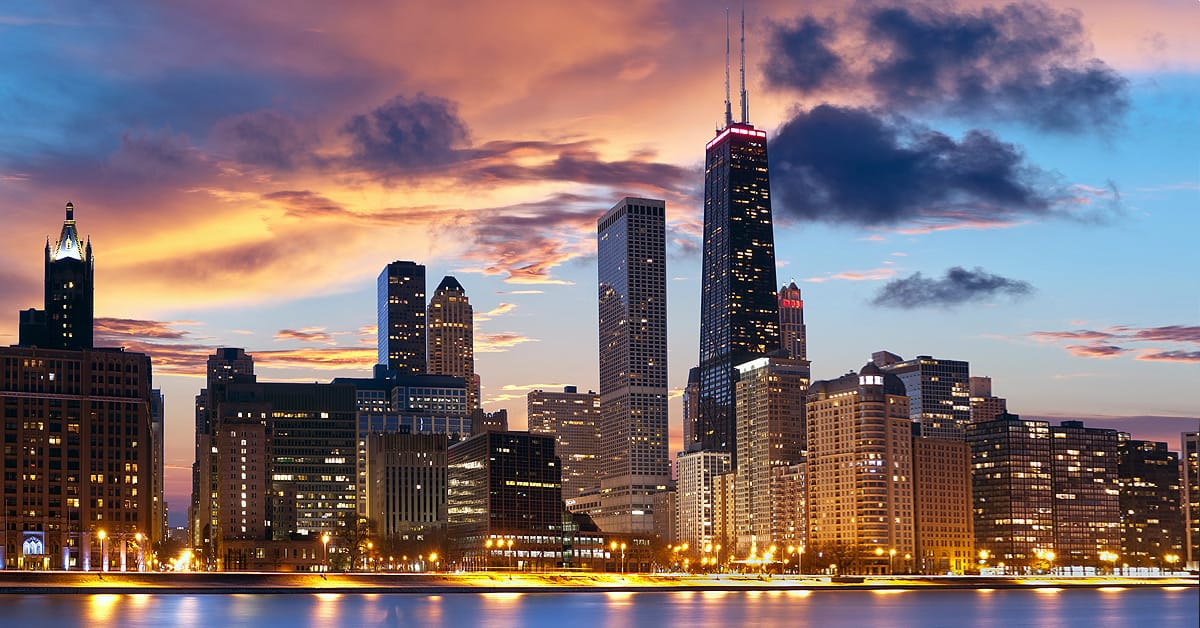 The Hancock Center reflects close collaboration between architects and engineers: Bruce Graham and Fazlur Khan of SOM. Photo © Rudy Balasko
The Hancock Center reflects close collaboration between architects and engineers: Bruce Graham and Fazlur Khan of SOM. Photo © Rudy Balasko .
In the 1960s, engineer Fazlur R. Khan, working for Skidmore, Owings & Merrill (SOM), proposed a new way for tall buildings to support themselves.
Instead of relying upon a conventional steel frame system, he pushed most of the structural elements to the perimeter, so that the entire building would behave structurally as a hollow tube — reducing the amount of steel by nearly 50%, lowering building costs, and creating more open interiors. This innovative “tube” system was first employed in Chicago’s 43-story Dewitt-Chestnut apartment building (1963-1966), with its rigid screen of closely spaced exterior columns and open floorplates.
But it was the 100-level John Hancock Center (1965-1969) that showed the world that the future of skyscraper design was tubular. The Hancock or “Big John” was instantly recognizable by its monolithic tapering profile and multistory diagonal X-bracing carrying lateral wind loads to the corners. The tower’s 344-meter “trussed tube” structure topped out on May 6, 1968, signaling not only a close collaboration between architects and engineers, but also a paradigm shift in skyscraper design.
Khan later used a variation of this system, the “bundled tube,” for the Sears Tower (now the Willis Tower), the tallest building in the world from 1973 to 1998. Today, variations on tube systems developed by Khan have become all but standard in skyscraper design around the world, including the 80-story Capital Market Authority headquarters building, a joint venture by HOK / Omrania, currently under construction in Riyadh.
Khan, who was born and educated in what is today Bangladesh, and continued his graduate studies and career in the United States, was inspired by more than just structural efficiency. As he said to an editor of Engineering News-Record in 1971, upon being selected for an award, “The technical man must not be lost in his own technology. He must be able to appreciate life; and life is art, drama, music, and most importantly, people.”
.
.













